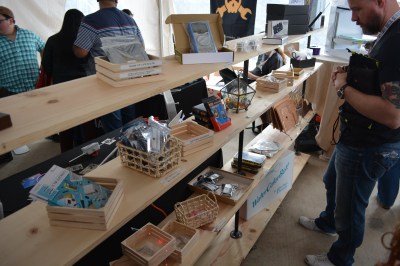[James J. Guthrie] just published a rather formal announcement that his 4-node Raspberry Pi cluster greatly outperforms a 64-node version. Of course the differentiating factor is the version of the hardware. [James] is using the Raspberry Pi 2 while the larger version used the Model B.
We covered that original build almost three years ago. It’s a cluster called the Iridris Pi supercomputer. The difference is a 700 MHz single core versus the 900 Mhz quad-core with double-the ram. This let [James] benchmark his four-node-wonder at 3.048 gigaflops. You’re a bit fuzzy about what a gigaflops is exactly? So were we… it’s a billion floating point operations per second… which doesn’t matter to your human brain. It’s a ruler with which you can take one type of measurement. This is triple the performance at 1/16th the number of nodes. The cost difference is staggering with the Iridris ringing in at around £2500 and the light-weight 4-node built at just £120. That’s more than an order of magnitude.
Look, there’s nothing fancy to see in [James’] project announcement. Yet. But it seems somewhat monumental to stand back and think that a $35 computer aimed at education is being used to build clusters for crunching Ph.D. level research projects.








 At SXSW Create in March the Hackaday booth was right next door one such establishment. [Martin Bogomolni] is hard at work launching his brick and mortar store called
At SXSW Create in March the Hackaday booth was right next door one such establishment. [Martin Bogomolni] is hard at work launching his brick and mortar store called 
 It’s safe to say we’ve all seen engineering solve part of this problem already. Over the last decade, Automatic External Defibrillators have become ubiquitous. The life-saving hardware is designed to be used by non-doctors to save someone whose heart rhythms have become irregular. [Chris Nefcy] helped develop AEDs and
It’s safe to say we’ve all seen engineering solve part of this problem already. Over the last decade, Automatic External Defibrillators have become ubiquitous. The life-saving hardware is designed to be used by non-doctors to save someone whose heart rhythms have become irregular. [Chris Nefcy] helped develop AEDs and 













